Mini reviews
Laura Lähteenmäki: North End: Niskaan putoava taivas [North End: Falling Sky]
24 January 2013 | Mini reviews, Reviews
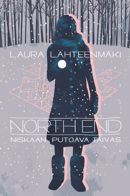 North End: Niskaan putoava taivas
North End: Niskaan putoava taivas
[North End: Falling Sky]
Helsinki: WSOY, 2012. 258 pp.
ISBN 978-951-0-38598-2
€27.90, hardback
The global success of Suzanne Collins’ The Hunger Games trilogy has spurred a boom in dystopian stories in Finland as well. The core themes of independence and friendship familiar from Lähteenmäki’s previous works are also present in this story about the impending end of the world. North End is set in the near future, around 50 years from now. This is hinted at by a reference to Victoria, queen of Sweden (currently a young princess), as a senior citizen. Recycling is a necessary part of daily life, and devices similar to exercise bikes are used to generate electricity at night. Widespread scarcity has forced people to become watchful of others, for good and bad. Tekla, a 14-year-old girl, has moved to North End with her family and is still looking to make new friends. Everyday life is thrown into disarray for Tekla and her younger brother when their separated parents get their custody weeks muddled up, and the children are left to fend for themselves. After the initial rush of freedom, the responsibility begins to frighten the siblings. Relationships and parenthood are put under the microscope on many occasions in this work, which will eventually grow into a trilogy.
Translated by Ruth Urbom
Magdalena Hai: Kerjäläisprinsessa [The Beggar Princess]
24 January 2013 | Mini reviews, Reviews
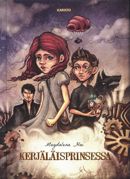 Kerjäläisprinsessa
Kerjäläisprinsessa
[The Beggar Princess]
Helsinki: Karisto, 2012. 188 pp.
ISBN 978-951-23-5593-8
€23.90, hardback
Kerjäläisprinsessa by the pseudonymous Magdalena Hai (born 1978) is a steampunk-esque novel for young teens that utilises an inventive alternative version of history. It is set in Greenland in the 1860s, where a community of settlers established by the Vikings has survived a minor ice age. The royal family were forced into exile, but the king is more interested in building curious inventions than saving the nation of Umbrovia. Strange robots and steam-powered inventions liven up the convoluted adventure. Princess Gigi has had to grow up as the object of everyone’s undivided attention. She befriends Henry, a boy from a poor family, and sets about saving her country from a looming threat. There is humour in this book, particularly in the character of Mussovitz, a werewolf: he has an idiosyncratic lisping manner of speaking. It remains to be seen whether Umbrovia will emerge as a nation ruled by powerful women in the subsequent titles in this series.
Translated by Ruth Urbom
Siiri Enoranta: Painajaisten lintukoto [Sweet haven of nightmares]
24 January 2013 | Mini reviews, Reviews
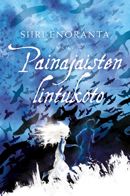 Painajaisten lintukoto
Painajaisten lintukoto
[Sweet haven of nightmares]
Helsinki: WSOY, 2012. 330 pp.
ISBN 978-951-0-38932-4
€26.90, hardback
Siiri Enoranta’s debut novel, Omenmean vallanhaltija (‘The Ruler of Omenmea’, Robustos, 2009) was nominated for the Finlandia Junior award, while another of her novels, Gisellen kuolema (‘The death of Giselle’) was nominated for the Runeberg Prize. Painajaisten lintukoto marks a departure from the genre Enoranta had focused on in her previous works. Her books incorporate the joy of spellbinding, spontaneous fantasy and skill at creating ever more uncanny settings. This novel is situated in the vacillating borderlands between sleep and the waking world. Lunni is a teenage boy who has been set a challenging task of overcoming nightmares and restoring natural sleep to people. The boy is joined by Tui, a mechanical girl. Other important figures in the story are giant tame birds that help Lunni and Tui get from place to place. The prose of Siiri Enoranta (1987) is lyrical, but it also contains points of contact for fans of fantasy writing of many different ages.
Translated by Ruth Urbom
Umayya Abu-Hanna: Multikulti. Monikulttuurisuuden käsikirja [Multiculti. A handbook of multiculturalism]
17 January 2013 | Mini reviews, Reviews
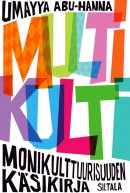 Multikulti. Monikulttuurisuuden käsikirja
Multikulti. Monikulttuurisuuden käsikirja
[Multiculti. A handbook of multiculturalism]
Helsinki: Siltala, 2012. 229 p.
ISBN 978-952-234-064-1
€ 24.90, paperback
Umayya Abu-Hanna is a Palestinian-born journalist and writer who lived in Finland for a long time and is now resident in Amsterdam. She has received awards for her work as an expert on multiculturalism. Finland’s migrant population is constantly growing, and Multikulti is aimed particularly at workers in Finland’s cultural sector; it may also be useful to others as a polemical handbook. Written in fluent, if flawed, Finnish, it contains practical instructions, tasks, and themes for discussion for those who deal with migrants. On the basis of her own experience and that of others Abu-Hanna shows clearly how migrants from outside Europe, especially Africans and Muslims, but also those who come to Finland from closer to home, encounter prejudice, racism, an involuntary lack of understanding and a lack of ‘cultural literacy’. Faults are evident at all levels of society, including the state’s cultural administration.
Translated by David McDuff
Matti Klinge: Kadonnutta aikaa löytämässä. Muistelmia 1936–1960 [Finding lost time. Memoirs 1936–1960]
10 January 2013 | Mini reviews, Reviews
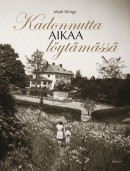 Kadonnutta aikaa löytämässä. Muistelmia 1936–1960
Kadonnutta aikaa löytämässä. Muistelmia 1936–1960
[Finding lost time. Memoirs 1936–1960]
Helsinki: Siltala, 2012. 557 p., ill.
ISBN 978-952-234-136-5
€31.95, hardback
Professor (Emeritus) Matti Klinge (born 1936) is a prolific historian who has specialised in the history of culture and ideas as well as in the debate on contemporary culture; he has also published 12 volumes of his diaries. In this fascinating volume of memoirs, inspired by writer Marcel Proust, he gives a detailed account of his childhood, schooldays and military service as well as his years of active study, shedding light on the cultural and social life of his time, from the point of view of Helsinki’s educated bourgeoisie, and draws telling character sketches of his contemporaries. The cultural heritage is reflected in the world of Klinge’s values and in his language. This handsomely produced book contains plenty of illustrative material ranging from entrance tickets and works of art to the jacket pictures of books important to the author and photographs. The volume lacks an index of personal names, which will hopefully be added to the final part of the work.
Translated by David McDuff
Pertti Lassila: Metsän autuus. Luonto suomalaisessa kirjallisuudessa 1700–1950 [Bliss of the forest. Nature in Finnish literature 1700–1950]
21 December 2012 | Mini reviews, Reviews
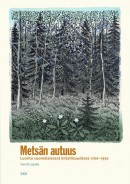 Metsän autuus. Luonto suomalaisessa kirjallisuudessa 1700–1950
Metsän autuus. Luonto suomalaisessa kirjallisuudessa 1700–1950
[Bliss of the forest. Nature in Finnish literature 1700–1950]
Helsinki: Suomalaisen Kirjallisuuden Seura (The Finnish Literature Society), 2011, 260 p.
ISBN 978-952-222-322-7
€35, paperback
Culture and art are relatively recent phenomena in Finland, but the forests, lakes and swamps have been here forever: national introspection has therefore always revolved around different ways of interpreting nature. National poet J.L. Runeberg (died 1877) romanticised the wilderness of the north and its starving inhabitants; pragmatic national philosopher J.V. Snellman (died 1881) rejoiced in the advances of continental culture in the farming regions of southwest Finland. Attempts to combine these two stances characterised the building of political and cultural ideas. Literary researcher Pertti Lassila follows the theme of nature through Finnish- and Swedish-language literature, including almost all major works up until the 20th century and some of the most important ones from the last century. His book is, at the same time, a description of the flow of ideas from the centre to the periphery, from the French classicist Carl Philip Creutz, author of hedonistic pastoral poetry, to Joel Lehtonen, writer of modern epics, whose endless pessimism was a largely constructed attempt to shape the split between nature and the alienated citizen of the 20th century; how successful he was is debatable. Nature remains a major theme in Finnish literature.
Translated by Claire Dickenson
Pilvi Torsti: Suomalaiset ja historia [The Finns and history]
21 December 2012 | Mini reviews, Reviews
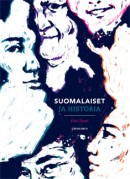 Suomalaiset ja historia
Suomalaiset ja historia
[The Finns and history]
Helsinki: Gaudeamus, 2012. 303 p., ill .
ISBN 978-952-495-264-4
€37, paperback
Dr Pilvi Torsti’s book is based on a project aimed at finding out through extensive interviews what ordinary Finns think of Finland’s history (especially in the period of independence since 1917), and how important it is to them, rather than how much they know about it. The large majority of the respondents believe that history forms part of general knowledge and also explains the present. They also attached importance to their own family history, while Finnish history was seen as a story of progress. History undertaken as a hobby is more common in Finland than in some comparable countries. When asked about the most important issues in the country’s history, the education system came top of the list in more than 75 per cent of the responses, and the Winter War (1939–40) and universal suffrage (1906) in more than half. The comprehensive presentation of research data and conclusions is leavened by the interviewees’ statements, as well as by drawings. More information about this many-faceted study can be found on the project’s website.
Translated by David McDuff
Markku Kuisma & Teemu Keskisarja: Erehtymättömät. Tarina suuresta pankkisodasta ja liikepankeista Suomen kohtaloissa 1862–2012 [The infallible ones. The story of the great bank war and Finland’s commercial banks, 1862–2012]
13 December 2012 | Mini reviews, Reviews
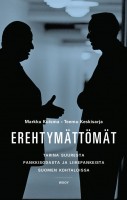 Erehtymättömät. Tarina suuresta pankkisodasta ja liikepankeista Suomen kohtaloissa 1862–2012
Erehtymättömät. Tarina suuresta pankkisodasta ja liikepankeista Suomen kohtaloissa 1862–2012
[The infallible ones. The story of the great bank war and Finland’s commercial banks, 1862–2012]
Helsinki, WSOY, 2012. 496 p., ill.
ISBN 978-951-0-39228-7
€ 38.80, hardback
Historians Markku Kuisma and Teemu Keskisarja’s lively book tells the story of Finland’s commercial banks, from the establishment of the first one in 1862. A recurrent theme in the book is the competition between the two largest. With their relations to and allies in the business world the banks have had an important social and political influence in the country. The commercial banking institutions have had more prominence than others, and the directors have often been strong personalities. Most of the emphasis in the book is placed on the final decades of the 20th century. In the 1980s the financial markets were deregulated, and the boom of the ‘crazy years’ of the bank war was accelerated by share trading and cornering. In 1995 the recession caused by the banking crisis led to the merger of the two largest commercial banks. A few years later this new institution merged with a Swedish one, and the large new bank Nordea subsequently expanded to neighbouring countries. The age of large national commercial banks in Finland was over.
Translated by David McDuff
Fredrik Lång: Av vad är lycka. En Krösusroman [From what is happiness. A Croesus novel]
4 December 2012 | Mini reviews, Reviews
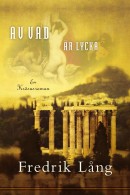 Av vad är lycka. En Krösusroman
Av vad är lycka. En Krösusroman
[From what is happiness. A Croesus novel]
Helsingfors: Schildts & Söderströms, 2012. 221 p.
ISBN 978-951-523-002-7
€20.25, hardback
What is happiness? According to the Western thought, happiness is to have, to own, and whenever possible to get even more – it is interesting to find out what our forefathers thought about the question before it was answered. This is precisely what Fredrik Lång does in this novel, the best since the ancient-inspired Mitt liv som Pythagoras (‘My life as Pythagoras’, 2005). Lång describes the Lydian king Kroisos, the richest man of his day, and his attempt to overthrow the wise Greek Solon’s idea that moderation and a contemplative lifestyle lead to happiness. Even if the driving force behind this novel is philosophical, it is brought alive with graphic depictions, extravagant battlefield scenes, intrigue and heartrending romance. Lång’s narrative is often ironic or comical, yet it still manages to emphasise the hard lives of its characters and the complete and utter inequality between master and slave, rich and poor, man and woman. Despite the immersion in the past, it is his own time Lång writes about, sometimes via shameless anachronism, sometimes subtle hints.
Translated by Claire Dickenson
Robert Åsbacka: Samlaren [The collector]
30 November 2012 | Mini reviews, Reviews
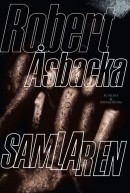 Samlaren
Samlaren
[The collector]
Helsingfors: Schildts & Söderströms, 2012. 191 p.
ISBN 978-951-52 3001-0
€22.50, hardback
Violence and darkness have always played an important role in the novels Robert Åsbacka (born 1961) writes, but up until now they have been accompanied by mitigating factors, tenderness, and warmer tones. His new novel is a dark story which goes deeper into the wound than any of the earlier novels. Tom, lonely boy and fatherless victim of bullying in a children’s world where adults neither see nor help, gets to know the young couple next door, Bo and Viola. Bo is friendly, Viola is nice and beautiful, and their life seems, for a while, to be the picture of a better future for a boy to grow up to, a life with a car, girlfriend, breathing room. But Åsbacka mercilessly reveals the grim truth about Bo and Viola; violence exists in the adult world too. In all its horror, Samlaren is one of the autumn’s best novels; the only comfort comes in the form of Åsbacka’s style, and well balanced and meticulous depictions. Åsbacka is careful in his choice of depictions, and he knows how to make sure the image remains etched into the reader’s memory.
Translated by Claire Dickenson
Aki Ollikainen: Nälkävuosi [The year of hunger]
23 November 2012 | Mini reviews, Reviews
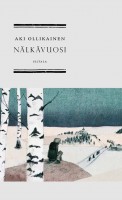 Nälkävuosi
Nälkävuosi
Helsinki: Siltala, 2012. 139 p.
ISBN 978-952-234-089-4
€32.90, hardback
Finland, winter 1867, famine. The historical framework of this first novel by Aki Ollikainen (born 1973) is barren and the twists of the plot, almost without exception, are dark. The novella weaves together two stories: the poor people of the countryside live hand to mouth, whereas city businessmen, the brothers Teo and Lars Renqvist, agonise about their love problems in their well-heated houses. Of a family of four that sets out from the countryside on a begging mission, only one lives to see the following spring and the melting of the snow. The beast in people leaps forth: when there is no longer anything left to lose, humanity, an unnecessary burden, is trampled into the mud. The whiteness of the endless winter becomes the colour of hunger and of death. Ollikainen’s brief and tragically beautiful novel – which won the Helsingin Sanomat Prize for first works in November – tells its cruel tale with a warmth that is not in conflict with the events it describes. When the roads of city gents and country people entwine, humanity wins, light dawns.
Translated by Hildi Hawkins
Olli Rehn: Myrskyn silmässä [In the eye of the storm]
23 November 2012 | Mini reviews, Reviews
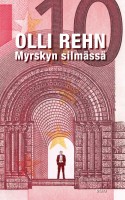 Myrskyn silmässä
Myrskyn silmässä
[In the eye of the storm]
Helsinki: Otava, 2012. 320 p.
ISBN 978-951-1-26250-3
€ 30.50, hardback
Finland’s Olli Rehn currently serves as European Commissioner for Economic and Monetary Affairs and vice-president of the European Commission. He had previously occupied the post of Commissioner for European Union Enlargement. During the long economic crisis that began in Greece is increasingly affecting the whole of Europe, he has been ‘in the eye of the storm’, looking for ways to overcome the difficulties of member states. In this recent ‘interim report’ aimed at the general public, Rehn describes his personal experiences against the background of the crisis during its troubled and at times extremely hectic moments, and also presents recipes for overcoming it, taking into account both the Finnish point of view as well as broader global connections. He sees the success of the EU as being dependent on the creation of a banking union, the strengthening of European economic and monetary co-operation and the reinforcement of the green economy. The book opens up a fascinating perspective on the core of the wielding of power within the EU. Rehn writes fluently – but as an official, without revealing all that has taken place behind the scenes.
Translated by DavidMcDuff
Kalevala maailmalla. Kalevalan käännösten kulttuurihistoria [The Kalevala in the world. A cultural history of Kalevala translations]
15 November 2012 | Mini reviews, Reviews
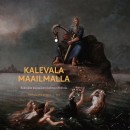 Kalevala maailmalla. Kalevalan käännösten kulttuurihistoria
Kalevala maailmalla. Kalevalan käännösten kulttuurihistoria
[The Kalevala in the world. A cultural history of Kalevala translations]
Toim. [Ed. by]: Petja Aarnipuu
Helsinki: Finnish Literature Society and Kalevala Society, 2012. 396 p., ill.
ISBN 978-952-222-372-2
€48, paperback
The Kalevala, based on the folk poetry collected by Elias Lönnrot, is Finland’s national epic. It first appeared in 1835, with a revised edition in 1849. The work has been published in more than 200 different versions in 60 languages, including prose translations, abridgements and adaptations. In this study, scholars and authors examine the Kalevala’s conquest of the world from many angles, ranging from Finland’s neighbouring regions, the epic traditions of Africa, the application of the epic to economic life, and the history of the work’s translation into the major languages of the world. The articles explore the linguistic, stylistic and cultural problems involved in translating the work and the experiences of some of the translators – for example, those who put the Kalevala into Iroquois. They also look at the motives behind the translations, and why in some languages there are several different versions. The book offers a varied and fascinating perspective on the epic’s cultural history.
Translated by David McDuff
Kaj Korkea-Aho: Gräset är mörkare på andra sidan [The grass is darker on the other side]
9 November 2012 | Mini reviews, Reviews
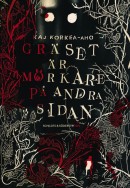 Gräset är mörkare på andra sidan
Gräset är mörkare på andra sidan
[The grass is darker on the other side]
Helsingfors: Schildts & Söderströms, 2012, 425 p.
ISBN 978-951-52-2999-1
€22.40, hardback
Finnish translation:
Tummempaa tuolla puolen
Helsinki: Teos & Schildts & Söderströms, 2012. 436 p.
Suomennos [Translated by]: Laura Beck
ISBN 978-951-851-482-7
€28.40, hardback
Benjamin’s life is turned upside down when he, in despair over his fiancée’s death, discovers things he perhaps didn’t want to know. A photograph taken by a speed camera minutes before the car crash shows that Sofie wasn’t alone in the car. A group of childhood friends reunite for Sofie’s funeral; dark secrets from the past which had until now lain hidden away and unexplained start to come out. What really happened when one of the villagers died in mysterious circumstances? Who murdered little Sidrid Ask? The enormous dark shadow filling people with chilling terror – is it Raamt, evil himself, walking amongst them again? Which should they be more scared of, the supernatural evil or the everyday and human that seems to be all around them? In his second novel the former television presenter and comedian Kaj Korkea-aho (born 1983) writes with great detail and a finely tuned ability to pitch his language. His novel is filled with fear, evil and supernatural phenomena, but at the same time with humour and warmth. The intrigue advances at an addictively fast pace. Korkea-aho takes his novel from biting parody, via horror to a beautiful yet serious depiction of the power of friendship.
Translated by Claire Dickenson
Ulla-Lena Lundberg: Is [Ice]
1 November 2012 | Mini reviews, Reviews
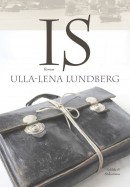 Is
Is
[Ice]
Helsingfors: Schildts & Söderströms, 2012. 364 p.
ISBN 978-951-52-2987-8
€ 23.25, hardback
Finnish translation:
Jää
Helsinki: Teos & Schildts & Söderströms, 2012. 365 p.
Suomennos [Translated by]: Leena Vallisaari
ISBN 978-951-851-475-9
€ 28.40, hardback
Ulla-Lena Lundberg (born on the island of Kökar, Åland, 1947) is already the author of an extensive list of award-winning books, but her new novel Is (‘Ice’) is undoubtedly her most impressive work. It is written in a classic genre, an epic bound by time and place, in which the sensitive portrayal of characters and details takes a strongly ethical direction. Is describes life in a outer archipelago in the late 1940s, where a young priest arrives with his small family. In his calling he is a man devoted to the Word: helpful, friendly, naïvely unsuspecting in his philanthropy. His wife is cast in a different mould: a practical, at times apparently emotionless survivor, who runs a large household single-handed. The couple becomes part of the community of small islands and its harsh living conditions. At times the ice that shuts the island off from the outside world melts into freedom, only to lapse again into a cold that rudely limits human destinies. Barren nature and a community spirit reverting to early Christianity take the measure of each other in the novel’s dramatic events.
Translated by David McDuff
